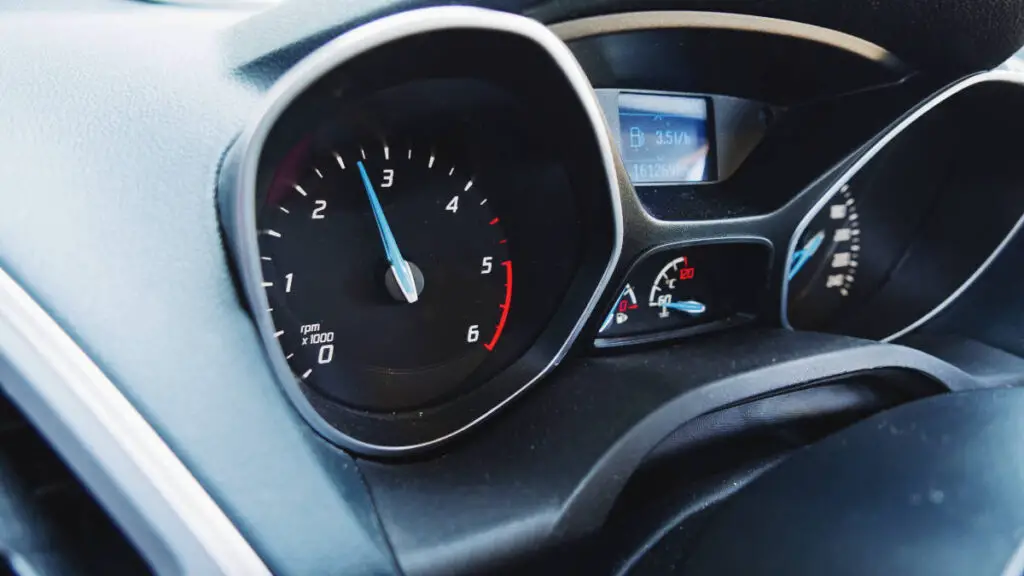The Ford F-150 has a failsafe mode to save itself if any crucial components—including the engine and transmission system—are damaged.
In this article, find out all about the failsafe (limp) mode and how to reset it.
Advertising links are marked with *. We receive a small commission on sales, nothing changes for you.
What Does Engine Failsafe Mode Mean On A Ford F-150?

Fast computers control modern automobiles. To assess all vehicle systems, new cars come with many computers. First, however, the central ECM receives and processes the data (engine control module).
This implies that your car’s OBD2 diagnostic system is always on the lookout and keeps an eye on ALL plans.
This includes the fuel system, ignition, emissions, powertrain, brake system, stability and traction control, throttle body, aftermarket parts, cutting-edge safety systems, and much more.
The engine failsafe mode will be activated by anything related to the systems mentioned above. Depending on the make and model of your car, the symptoms and the underlying causes will change.
The meaning, however, remains the same. The engine or gearbox will go into limp mode to prevent additional damage if something goes wrong with any of the different systems in the engine or transmission. It truly is that easy.
What initiates the engine failsafe mode, however, is more complex. That is a whole other issue.
What Causes Failsafe Mode On Ford F-150?
The check engine light will often come on as soon as the engine enters failsafe mode.
However, when diagnosing, you should remember that a check engine light does not always imply that the machine is operating in failsafe mode. Even though the signs of failsafe mode are apparent, the engine will occasionally go into limp mode even if the issue is not fundamentally electrical or sensor-related.
However, the type of vehicle, make, model and severity of the issue all play a role in determining what causes limp mode. Not every car is the same.
A soft or hard fault code may be present when the check light turns on. The 16-pin socket under your dash is where you should insert your On-Board Diagnostics (OBD2) tool.
Soft Code
A soft OBD2 code is less intrusive and dangerous than a hard code.
A soft OBD2 code indicates a malfunctioning sensor whose signal value is still within the desired “outside of the CPU” range.
Low-priority sensors, which also vary by vehicle type, are typically the root of soft codes.
Hard Code
On the other hand, a hard code is activated if a high-priority sensor’s signal value deviates too much from the previously indicated allowable outside range.
This might indicate a failing fuel injector or a failing gearbox.
When this occurs, the ECU will switch back to danger mode or secondary mode.
For instance, a hard code transmission issue prevents the gearbox from moving gears.
It may also fall back to a single workable gear to safeguard the malfunctioning part and the transmission.
If the engine is in secondary or survival mode, the same applies.
The engine speed will be controlled to prevent costly engine damage from occurring if you rev the engine too high.
And indeed, limp mode or failsafe is caused by hard codes. Therefore, it is essential to drive gently and take your car to a technician or repair shop immediately if you are certain it is in limp mode.
How Do I Reset My Failsafe Mode On Ford F-150?
As we’ve already explained, you have both soft and hard codes.
Soft codes are often not hazardous and may be resolved by changing the defective sensor.
Hard Codes are a sign of a severe issue, and clearing them necessitates replacing the engine or transmission.
You may identify the cause of your engine’s limp mode using an OBD2 tool.
Your best option for resolving limp mode is following proper troubleshooting procedures. Unfortunately, you cannot just use your Bluedriver to erase the OBD2 code and continue.
The best course of action may be to speak with a technician.
Even if you have an OBD2 scan tool, you might need to gain the necessary skills to understand the issue codes properly. But if you’re fortunate, the issue could result from carelessness or oversight.
Examples Of What Causes Your Ford F-150 To Enter A Failsafe/Limp Mode
Here are a couple of things that could cause your F-150 to go into a failsafe (limp) mode.
Engine Component Failure
The pickup truck’s engine is its most crucial component.
Any component that experiences mechanical failure will activate the failsafe mode by restricting its power. An engine is a small unit with several moving elements, including pistons, fuel injectors, valves, and its lubricating system.
As a result, this mode is activated if any temperature, oil pressure, or valve-moving solenoids detect an anomaly. In extreme circumstances, it will prevent the engine from starting, and you won’t be able to start it until the problem is fixed.
Transmission System Fault
Power is transferred from the engine to the wheels through the transmission, a crucial drivetrain component.
It comprises several gears in a box and needs enough lubrication to avoid heating issues.
As a result, the check engine light may illuminate the dashboard if the gearbox has a problem that prevents smooth shifting, such as damaged gear teeth, mechanical issues, or heating of the components due to insufficient transmission fluid.
Issues With The Fuel System
Any technical issue causes low fuel pressure on the engine with the fuel pump or a leak in the fuel lines. The ECU or PCM will put the F-150 into failsafe mode by shutting off its full power.
Failure of the fuel injectors, which prevents enough gasoline from reaching the combustion chambers, is another potential cause of the truck’s inability to ignite or start.
Additionally, there may be issues with the fuel filter/strainer, the fuel pump’s motor, or any mechanical harm to the pump impeller.
Issues With The Sensors
Pressure, temperature, and speed sensors are available in modern automobiles to detect these conditions at different essential components.
Any faulty sensor can transmit a false signal to the PCM, generating a fault code and putting the F150 into failsafe mode.

Luna Meschiari is a full-blooded car nut who is well known to local garages, as each article is meticulously researched and peppered with the latest piece of information. Guess what car she’s driving right now? A RAV4 2021 Hybrid. But her heart also sleeps for pickups like the F-150. Get to know Luna better on the about us page.
Advertising links are marked with *. We receive a small commission on sales, nothing changes for you.
